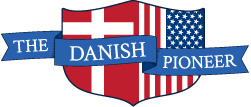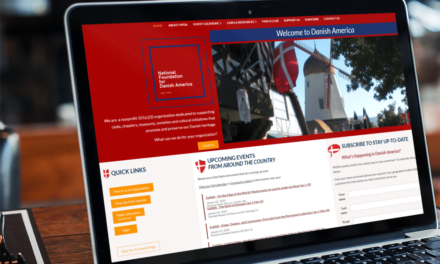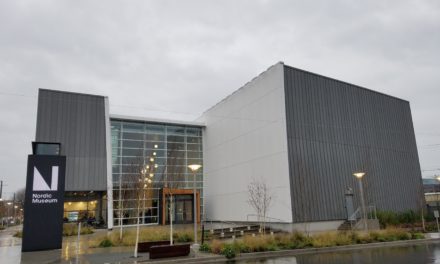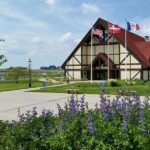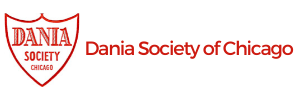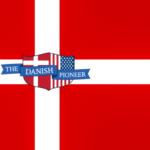
What’s It Like to Be An Intern at the Danish American Archive & Library? Heather Hannaford shares her story
Editor’s note: As a result of the Danish American Archive and Library’s community cooperation agreement with the University of Nebraska at Omaha, Heather Hannaford worked as an intern for the fall semester of 2013. Heather is currently working on her master’s degree in British literature and plans to pursue her doctorate in the same field. She wrote the following to describe the exciting experience she had at the DAAL.
MY EXPERIENCE AS A DAAL INTERN
By Heather Hannaford
As a new graduate student at UNO, I decided I wanted to take on an internship during my first semester. My advisor, Dr. Kristin Girten, placed me at the Danish American Archive and Library to give me a feel for the kind of archival work I will be expected to do if I pursue a PhD. I was excited to work there because my family has ties to Denmark. I never imagined all the exciting finds I would make while working on my first assignment!
I was given five boxes of assorted documents relating to the life of Elna Smith Melvin to sort through and catalog. The collection was sent from the University of Kentucky where Elna’s friend and executor, Abbie Marlatt, had been employed. Elna was born in Chicago in 1903. Her parents were H. Skov Nielsen and Anine K. Jensen Nielsen. Elna graduated from Blair High School in 1920 and attended Dana College for one year before transferring to University of Nebraska at Lincoln and eventually doing graduate work at UC Berkeley. She was married twice, and both her husbands were involved in scholarly pursuits. Maurice Greer Smith, her first husband, was an anthropologist, and Bruce Melvin was a sociologist. Elna’s own interests aligned with those of her two husbands, leading her to very unique and interesting experiences throughout her life. Her collection reflects some of the truly exciting moments of her career.
While married to her first husband, Elna worked with the Bureau of Indian Affairs (BIA) in Oklahoma. I found many previously undocumented photographs of Native American tribal members dating from the 1920’s and 1930’s. The collection contains photographs from various tribes and needs to be further investigated. Elna wrote her thesis about suicide among Native Americans based on research she accomplished during this period. Her thesis and notes are contained in the collection as well.
Elna’s work with the BIA led her to investigate Peyote Cults among Native Americans. This became a lifelong interest. In the 1950’s she wrote to Aldous Huxley regarding his book The Doors of Perception. Huxley wrote two personal letters to Elna dated 1954 and 1956 that discuss his own experience with Peyote. Both letters are in excellent condition and are contained in the collection, along with a copy of the original letter she sent to Huxley. The letters are a truly spectacular find for future researchers.
Elna’s second husband’s work led to another incredible discovery. The introduction to Bruce Melvin’s book, Millions Too Many, was written by Eleanor Roosevelt. Among the documents relating to the book are several letters written by Eleanor Roosevelt to Dr. Melvin. A photograph of Dr. Melvin with Mrs. Roosevelt is included in the collection. Elna and Dr. Melvin also dined at the White House with President and Eleanor Roosevelt in an intimate party that included only one other couple. The place card from the dinner is among the artifacts in the collection.
It is unusual to find anything as remarkable as hand written letters from Aldous Huxley or personal notes from Eleanor Roosevelt, but to find both, along with significant photographs of Native American tribes is amazing. This collection is of great importance for researchers across many disciplines, including English, American history, Native American studies, sociology, and anthropology to name few. Elna’s life story is very interesting and could also provide a wonderful perspective on Danish American life in the twentieth century. I am so thrilled to be involved with the work of uncovering her story. In fact, I enjoyed my time as an intern so much that I decided to continue my work as a volunteer.
The Danish American Archive and Library collects, catalogues and makes available to the public documents and other media that span three centuries—from the mid 1800’s to the present. It is open weekdays from 8 a.m. to noon. For more information, go to www.danishamericanarchive.com.
=============================================================================
ABOUT THE DANISH PIONEER NEWSPAPER – SINCE 1872 – ENGLISH & DANISH ARTICLES
THE DANISH PIONEER NEWSPAPER IN ACTION: Did you know that The Danish Pioneer staff, editors, photographers columnists and writers help readers discover unique travel destinations, interesting stories and special events in the USA, Canada, Denmark & Scandinavia? Come discover more in 2014.
THE DANISH PIONEER NEWSPAPER WAS FOUNDED IN OMAHA, NEBRASKA IN 1872 AND TODAY IS STILL PUBLISHED JUST OUTSIDE CHICAGO, ILLINOIS. Did you know by supporting The Danish Pioneer Newspaper’s print edition, we are able to offer the bonus of our colorful, exciting website. Please support The Danish Pioneer Newspaper. Subscriptions to our print edition are economical, and you receive 26 issues per year including the extra-large, extra-special holiday issue. Subscriptions and advertisements – like annual donations to ethnic institutions or memberships to clubs, lodges and organizations – help The Danish Pioneer Newspaper staff to preserve and to support the Danish-American ethnic press in addition to allowing us to promote the Danish and Scandinavian culture, communities, heritage and traditions in the USA and North America. Please subscribe today or give The Danish Pioneer Newspaper as a gift subscription to a friend or relative. Visit http://www.thedanishpioneer.com/subscribe/
MANGE TAK! Thank you and WELCOME to The Danish Pioneer Family!
